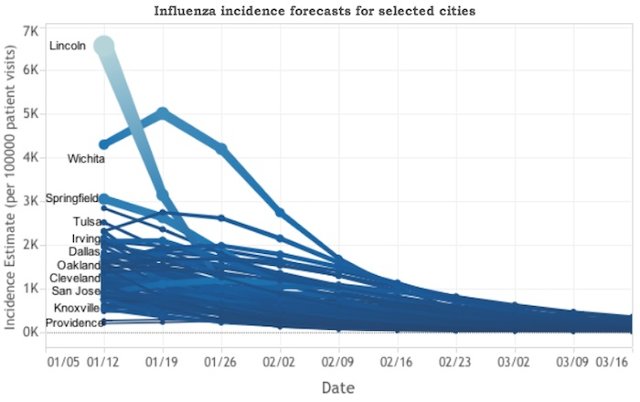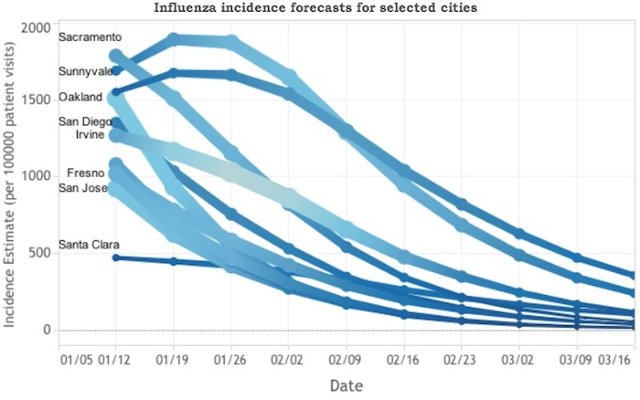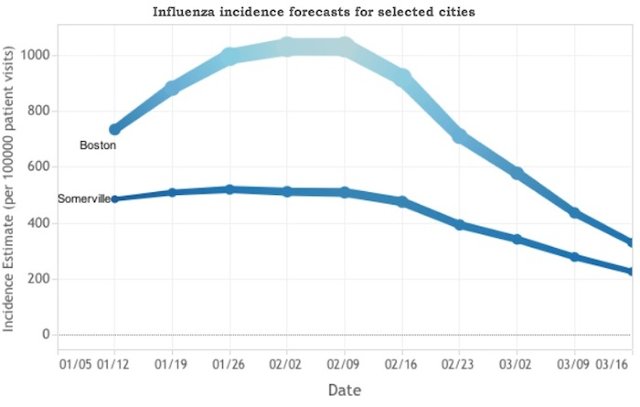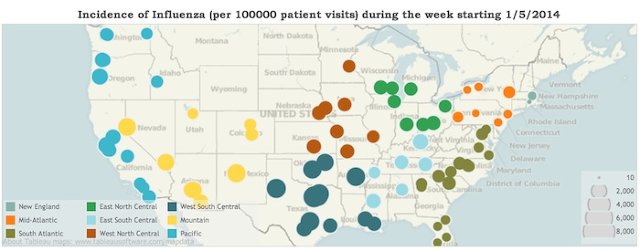A terrific insider account of the extremely organic conception and birthing of Medicare (nee Medibank)….
Feb 1 is the 30th anniversary of Medicare. But the story of Medicare really goes back 40 years to the passing of the Medibank legislation by the Whitlam Government in a joint session of the Parliament on 7 August, 1974.
Medibank started on schedule on 1 July 1975 when health insurance cards were issued to the Australian population.
But the Fraser Government attempted to wind back Whitlam’s Medibank. The Fraser Government introduced legislation for Medibank Mark 2 that included a 2.5% levy and gave the public an option of taking out private insurance instead of paying the levy. It established Medibank Pte.
On 1 Feb 1984, the Hawke Government re-established the basic design of Whitlam’s Medibank. There were financial changes and the name changed from Medibank to Medicare which we have today.
Medibank/Medicare was always a public insurance scheme. It has never delivered health services. It financed the existing health ‘system’. Unfortunately in the days since the establishment of Medibank/Medicare the health “system” has not been seriously reformed to reflect the experience and the needs of today. The vested interests in the health system that tried so desperately to derail Medibank/Medicare over a long period are still in play today, holding back essential reform.
I wrote the article which is reproduced below in July 2000. It was published in the Medical Journal of Australia. It sets out the long and difficult struggle to launch Medicare.
Down a different path in Melbourne: how Medibank was conceived (John Menadue)
On a bleak midwinter night, the germ of an idea crystallised into a grand plan.
It was hard-going developing policies in Opposition, particularly for a reform party out of power during the long Menzies ascendancy. The task was made harder in Australia, with our written Constitution interpreted for many years by a conservative High Court.
A historic meeting
Health policy was no exception, but a turning point came on the night of 6 June 1967, at the home of Dr Moss Cass in Melbourne. Cass was among the most farsighted and perceptive thinkers on health policy that I have met. Cass was then in charge of a trade union health clinic in Melbourne and later became a Minister, but not Health Minister, in the Whitlam governments.
As Gough Whitlam’s Chief of Staff in an office of only three people in the mid-1960s, I had been building up groups of people who could advise him on a range of issues, such as education, science, housing, transport and health. These groups were the building blocks that Whitlam used to rewrite almost the whole of the ALP (Australian Labor Party) platform. That work came to fruition in the ALP’s election victory of 1972. The groups were made up of professionals, academics and other reform-minded people who freely gave their skill and time. Few were members of the ALP.
Professor Sol Encel was my chief collaborator in building these groups. He was Reader in Political Science at the Australian National University at the time and later became Professor of Sociology at the University of New South Wales. Encel suggested Cass as an adviser on health policy. Cass had written an influential Fabian Society pamphlet on health policy and advocated a national health system founded on public hospitals and health centres staffed by salaried doctors.
In 1967, the ALP’s election prospects seemed as bleak as the midwinter night when Whitlam and I rang Cass’s front door bell. Many years later, Whitlam asked me what time of the year the meeting was held. I recalled it was midwinter because Cass had lit a log fire to try to cheer us up. The evening turned out to be a historic turning point, although no-one recognised it at the time. If we had realised how important it was, we would at least have had a photographer present!
Cass had also invited Dr Rod Andrew, Foundation Dean, Faculty of Medicine at Monash University, who had been a public advocate of more salaried staff in hospitals. Also present was Dr Jim Lawson, Superintendent of the Footscray Hospital, who was described by Cass as having a view that there were too many hospital beds, and that they should be used more efficiently and with greater emphasis on care in the community. Dr Harry Jenkins, the ALP spokesman on health in the Victorian State Parliament, was also present. However, the key attendees. were two young researchers from the Institute of Applied Economic Research at Melbourne University, John Deeble and Dick Scotton. Deeble had previously been Deputy General Manager of the Peter MacCallum Clinic in Melbourne. Scotton had been economist at the Commercial Banking Company in Sydney and doing ground-breaking research at Melbourne University on the pharmaceutical industry, hospital costs and compulsory and voluntary health insurance.
A scheme of universal health insurance
From that 6 June 1967 meeting, Deeble and Scotton developed a universal and compulsory health insurance scheme to be funded by a tax levy. It was clear that the Liberal-Country Party Coalition Government’s voluntary health insurance scheme, supported by taxpayers’ funds, was wasteful and inequitable and that an alternative was needed.
In May 1968, Deeble and Scotton distributed their paper, A scheme of universal insurance (unpublished paper, Institute of Applied Economic Research, May 1968). Whitlam used this academic treatise as a major input in his own policy development. In July that year, 13 months after the meeting at Cass’s house and almost five years before he became Prime Minister, Whitlam outlined The alternative national health program (called “Medibank”, and later “Medicare”), which was to become so much part of Australian national life. The Deeble and Scotton ideas became a practical and political program. Once again, rigorous policy development and a compelling Whitlam speech became party policy.
In retrospect, the June 1967 meeting took health down a path that neither Whitlam nor I expected. We were looking in another direction. Medibank was about financing access to “the health system”, not about how the health system could better deliver services to the community. It is noteworthy that, 25 years after the obvious success of Medibank, with increased demands on the health system in a consumer society, we are being forced to again consider how we can better deliver health services. Access to “the health system” is no longer sufficient; the system itself needs attention.
In most of the seven years I spent with Whitlam, we were not working on a compulsory health insurance scheme, but focusing on how to develop and strengthen a public hospital system with regional clinics and services. Because of the constitutional and political barriers to nationalisation of the medical profession, the only feasible route seemed to be via increased Federal Government funding for expanded State public hospital systems that could compete with private hospitals and private doctors.
The overseas experience
Many of us in the ALP at the time were attracted to the National Health Service (NHS) which the British Labour Party had introduced in the 1940s. But such a scheme in Australia was constitutionally impossible. It was also politically hazardous, with doctors in many countries suspicious of and rigorously opposed to the British NHS at the time, although it has stood the test of time much better than its many critics.
With Cass’s assistance, we read the literature on different healthcare schemes around the world. What caught our attention were the many surveys and analyses which showed that fee-driven, private medicine resulted in excessive treatment, high costs and orientation away from preventive care. These health schemes were overwhelmingly producer- rather than consumer-driven and were inherently unstable, with suppliers of the services substantially managing the demand. I recall particularly articles in the New England Journal of Medicine about the development of health maintenance organisations in the United States in response to escalating private health costs.
A national hospital system
In 1961, long before Deeble and Scotton came along and Medibank was conceived, Whitlam had described his path for health reform in his Curtin Lecture: “…the best way to achieve a proper national health service is to establish a national hospital system.” He added:
“…the proper approach is for the Commonwealth to make additional grants to the States on condition that they regionalise their hospital services and establish salaried and sessional medical and ancillary staff in hospitals.”
These ideas were further developed and articulated in a speech which he gave to the citizens of Rochester, Victoria, in 1964. They were clearly nonplussed when, at their rural hospital, he told them that “it is more important to nationalise hospitals than to nationalise the medical profession”. What was he talking about? This was Whitlam’s way of circumventing the constitutional obstacles, although it seemed very remote from the problems facing Rochester. While Federal Parliament could “make laws with respect to … pharmaceuticals, sickness and hospital benefits”, it could not “authorise any form of civil conscription”. Nationalisation of the medical profession, as in the United Kingdom, was out, but a national health service based on “Section 96″ federal grants to the States for hospitals with regional health services and employing salaried staff was seen as a way forward. There would be choice for doctors and patients. (Under Section 96 of the Australian Constitution, “the [Commonwealth] Parliament may grant financial assistance to any State on such terms and conditions as the Parliament thinks fit”.)
Elected in 1972, the Whitlam Government introduced a five-year program of capital assistance for hospitals. Under Section 96 of the Constitution, these were “special purpose grants”. The Fraser* Coalition Government did not renew the program, nor did the Labor governments of Hawke or Keating.
However, after June 1967, major health reform was to go down the Medibank compulsory insurance route rather than the funding of hospitals and related services. Medibank would prove simpler to explain and implement. It was also a more likely political winner.
Voluntary versus compulsory health insurance
While developing reforms based on hospitals, Whitlam had been persistently criticising the shortcomings of voluntary health insurance. He had asked many questions on notice in Federal Parliament since the early 1960s about the high cost, high reserves and limited coverage of private health funds. We were of the view that, on a per capita basis, the total cost of the Australian health system exceeded by a large margin the cost of the NHS in the United Kingdom, but we were finding it hard to prove. We could identify the Government’s health costs, but the additional costs to individuals, either directly or through their health funds, were hard to pin down. We suspected that the higher costs in Australia were due to the inefficiencies of the health funds and the perverse financial incentives inherent in fee-for-service, which encouraged over servicing and overprescribing.
So when Whitlam met Deeble and Scotton to discuss their new approach to health insurance, he was very receptive, although I recall that the 6 June meeting was slow to begin, with Whitlam’s eyelids drooping a few times. But his interest sparked up dramatically when Deeble and Scotton explained that in their view a compulsory and universal scheme would be cheaper than existing arrangements. There· was thus the exciting prospect ahead of a health scheme that was both universal and also politically defensible as to its cost.
Whitlam’s critique of voluntary health insurance, supported by the work of Deeble and Scotton, was confirmed by Justice Nimmo in his 1969 report. (The Coalition Government had established the Nimmo inquiry into health insurance to try to pre-empt the findings of a Senate committee which was reviewing health insurance.)
The campaign against Medibank
The long drawn out battle for the Medibank reforms was unrelenting in both the 1969 and the 1972 elections. John Cade, General Manager of the Medical Benefits Funds of Australia, said in August 1968, one month after Whitlam outlined his “Alternative National Health Program”, that “Karl Marx’s theories have never been wanted by Australians in the past and they are needed even less today …If you want to pervert the truth and have it believed, tell a whopper and tell it often!”
It wasn’t a particularly well argued or dispassionate analysis of Whitlam’s proposals, but Cade’s comments give some idea of the hype and passion of the anti-Medibank campaign. Health funds spent contributors’ money, including mine, to fight Medibank.
The Australian Medical Association (AMA) and the more militant General Practitioners’ Society in Australia conducted a shrill and long campaign against Medibank. An AMA “freedom fund” was established. Television, radio and newspaper advertising, supported by a public relations campaign, was waged relentlessly, year after year. The AMA sent letters and publicity kits to all doctors. They were designed to keep up the “noise level”. Even a former Miss Australia was called to the battlefront following petitions in Federal Parliament and “calls to action” by doctors. Without any apparent sense of irony, the campaign against Medibank was described by the AMA as protecting the “doctor and patient relationship”.
The two Medibank Bills were three times rejected by the Senate after the 1972 election and were only finally passed after a double dissolution of Federal Parliament and the joint sitting of Parliament in July 1974. The Medibank Bills were two of the six Bills on which a double dissolution had been secured in April 1974. But, even then, the Coalition Opposition, supported by doctors, would not concede. The implementation of Medibank was delayed further by the Senate in late 1974 when it rejected three Bills to impose a 1.35% levy on taxable incomes. As a result it was decided to finance the scheme initially from general revenue, and the funding was provided in Bill Hayden’s first Budget in August 1975. At that time I was Secretary of the Department of Prime Minister and Cabinet.
The future
It had been a long and bitter campaign from that midwinter night in Melbourne in 1967 to spring in Canberra in 1975. No government will now seriously tamper with the compulsory and universal health insurance scheme. The area of concern and debate for the future will not be so much about funding of Medicare, but rather about how we improve the delivery of health services.


 Smartphone app visualises two similar running routesI am obsessed with my running app. Last week obsession became frustration verging on throw-the-phone-on-the-floor anger. Wednesday’s lunchtime 5km run was pretty good, almost back up to pre-Christmas pace. On Friday, I thought I had smashed it. The first 2km were very close to my perennial 5 min/km barrier. And I was pretty sure I had kept up the pace. But the app disagreed.As I ate my 347 calorie salad – simultaneously musing on how French dressing could make up 144 of them – I switched furiously between the two running route analyses. This was just preposterous; the GPS signal must have been confused; I must have been held up overtaking that tourist group for longer than I realised; or perhaps the app is just useless and all previous improvements in pace were bogus.My desire to count stuff is easy to poke fun at. It’s probably pretty unhealthy too. But it’s only going to be encouraged over the next few years. Wearable technology is here to stay. Smart phone cameras
Smartphone app visualises two similar running routesI am obsessed with my running app. Last week obsession became frustration verging on throw-the-phone-on-the-floor anger. Wednesday’s lunchtime 5km run was pretty good, almost back up to pre-Christmas pace. On Friday, I thought I had smashed it. The first 2km were very close to my perennial 5 min/km barrier. And I was pretty sure I had kept up the pace. But the app disagreed.As I ate my 347 calorie salad – simultaneously musing on how French dressing could make up 144 of them – I switched furiously between the two running route analyses. This was just preposterous; the GPS signal must have been confused; I must have been held up overtaking that tourist group for longer than I realised; or perhaps the app is just useless and all previous improvements in pace were bogus.My desire to count stuff is easy to poke fun at. It’s probably pretty unhealthy too. But it’s only going to be encouraged over the next few years. Wearable technology is here to stay. Smart phone cameras 


















